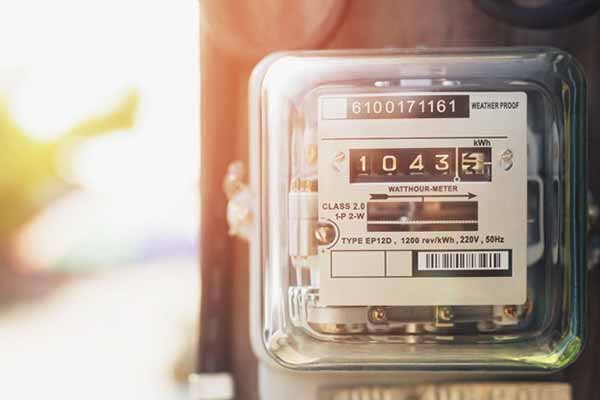Amperes, volts, wattage, kilowatts, kilowatt-hours — what do they all mean?
Understanding electricity, how it works, and how it is measured can be a bit of a handful for the uninitiated. Most of us don’t bother with understanding the elementary principles and terms.
Nonetheless, it is helpful to understand the basics of electricity in any energy consumption and electrical power discussion.
To get you started, we will define some standard terms and also help you understand how electricity works, at least from a beginner’s perspective. Finally, we’ll explore the watt, the kilo-watt hour, how it works, and what it means to you.
Essentially, How Does Electricity Work?
For simplicity’s sake, think of electrical current as analogous to water running through a pipe. Electricity runs through a wire. However, what’s happening isn’t freely flowing electricity. Instead, electrical current occurs when negatively charged electrons are induced to flow along a wire; you might say the electrons nudge each other forward.
Amperes are a current’s unit of measurement, or how fast the electricity “flows.” Electrical circuits are rated in amperes.
Direct current means the flow is directly from positive to negative. In contrast, alternating current means the electrical flow can reverse directions. For example, the batteries in your flashlight generate direct current, and your house runs on alternating current.
Volts measure the pressure of the electrical current, similar to the water pressure in your plumbing. For example, your lights and outlets run on 120 volts, but your large electrical appliances (stoves, washers, dryers, etc.) run on 220 volts.
Your electricity consumption is measured per second and often called wattage. Manufacturers rate your appliances in watts, indicating the amount of energy they will draw when in use.
A watt is a small unit of power. For example, a 100-watt light bulb draws 100 watts per hour; a refrigerator can draw 350-780 watts.
Why Is It Called A “Watt?”
What a funny name. You might be wondering, why is it called a “watt?” What in the world does “watt” mean anyway?
James Watt, a Scottish inventor, was responsible for significant improvements to the steam engine during the Industrial Revolution, which impacted numerous industries. Due to his many contributions to science and industry, his name formally became that for the basic unit of energy.
So, What Exactly Is a Kilowatt-Hour?
A kilowatt-hour (kWh) means that 1,000 watts are used in an hour. Therefore, a kilowatt-hour (1,000 watts/hr) is more commonly used to account for household electricity consumption.
Returning to our example of the 100-W light bulb, the bulb has to be turned on for 10 hours to consume one kWh of electricity. So, suppose your refrigerator draws 750 watts. In that case, it uses .75 kilowatt-hour of power if it runs for an hour.
To account for more significant energy measures, power plants often describe electrical energy capacity in multiples of kilowatts. For example, megawatts (MW) are 1,000 kilowatts, and gigawatts (GW) are 1,000 megawatts. So then, a megawatt-hour (MWh) is a million watts per hour, and a gigawatt-hour (GWh) comes to one billion watts per hour.
However, such large amounts of electricity don’t apply to household usage. A kilowatt-hour is how your utility company bills your electrical energy usage. Your home has an electric meter at the point electricity enters the house. Your utility company uses that to measure your electrical energy usage in kilowatt-hours.
Is a Kilowatt-Hour a Unit Of Power?
It isn’t readily apparent, but the simple answer is yes; a kWh is a unit of power. Let’s look at the difference between power and energy to understand the answer, terms we often use interchangeably.
In physics, energy is defined by an entity’s ability to perform work; in this case, electrical energy. As stated above, a kilowatt is 1,000 watts of power. Those 1,000 watts can perform work in the form of lighting and heating our homes. Power is the rate at which work is performed. Therefore, by consuming a kWh, we can say power has been consumed, or that work has been done. Therefore, using more energy means more power consumption.
For example, let’s return to our 100-watt light bulb. Electrical energy is available when the light bulb is off, but no work is performed. Turn on the light switch, and there is power; the energy of 100 watts – is a measurement of work in a given time period: Power. So, if you run the light for 10 hours, you’ll have consumed 1 kWh of power.
How Many Kilowatt-Hours Does a House Use a Month?
According to the U.S. Energy Information Administration, the national average for an American home was 893 kWh a month in 2020. However, the specific answer to this question depends on how many appliances you have, how much you use those appliances, and, not surprisingly, where you live. You also have to consider your heating and cooling power consumption. So let’s look at the different factors.
Most homes have a washer, dryer, refrigerator, and stove. In 2021, most American families did 40 to 45 loads of laundry per month, or at least one a day. A wash cycle is about 30 minutes, and a dryer runs about 45 minutes. Total energy consumption, with energy-efficient appliances, averages 2.5 kWh for each load of laundry. Multiply that by 40, and you consume 100 kWh per month to wash your clothes.
Appliances, large and small, add to your power consumption. As we’ve said, a refrigerator uses 37.5 kWh/month. On average, an electric range top and oven draw 2-5 kWh per hour’s use. At an hour a day for a month, that’s 60-150 kWh.
Your water heater, microwave, hairdryer, lighting, computers, television, and coffeemaker add still more to your total energy consumption, so it’s easy to see how it adds up.
Your house size is also a consideration for the power you consume by heating or cooling. Depending on the square footage of your home and the thermostat setting, you can expect your central air conditioner to consume 3-5 kWh for nine hours of operation. A central forced-air gas furnace will use less than .6 kWh to run, primarily because the igniter and the fan are the only parts of your furnace that require electricity.
Enter your ZIP Code and compare electricity rates
How Do I Calculate My Kilowatt-Hours?
Calculating kilowatt-hours is a bit of simple math if you know how many hours your appliances run and what the wattage is for those appliances.
Say, for instance, your refrigerator is rated for 500 watts, and it cycles on and off five times a day. Each time it cycles on, it runs for 30 minutes. That means that for each cycle, it draws 250 watts. So the total wattage per day (doing the math at 5 x 250 watts) is 1,250 watts or 1.25 kilowatt-hours. So, on average, your refrigerator uses 37.50 kWh/month.
Remember, there are variables, such as the teenager who stands with the fridge door open while deciding what to eat or drink. In short, the more you open the refrigerator door, the more the refrigerator cycles on and off.
You can get a pretty good idea of your monthly kWh power consumption by calculating the kilowatt-hours for all your large appliances. Upgrading your appliances to energy-efficient models will lead to energy savings that you’ll see on your electric bill.
Is 30 kWh a Day a Lot of Energy Use?
Actually, 30 kWh/day is about average. That works out to 900 kWh/month, just over the national average of 893 kWh. But, of course, your daily kWh of energy consumption will vary from day to day, depending on how much laundry or cooking you do, how much TV you watch, and your other energy-consuming activities.
How Much Does a Kilowatt-Hour Cost?
Because we get our electrical power from different utilities, electricity rates vary, and the monthly cost of electricity fluctuates wildly. According to the U.S. Energy Information Administration (EIA), the national average cost of a kWh of energy was just over 10.5 cents in November 2021. For instance, in Hawaii, the average price of electrical power was well above the national average at nearly 30 cents/kWh. Idaho, by contrast, had an average price of 7.99 cents/kWh.
How Much Does It Cost to Generate One Megawatt-Hour?
Factors that affect your electricity price include the infrastructure costs of a power plant, how power plants generate electricity, and how much your utility pays for the energy they deliver to your home. Power plants generate electricity using fossil fuels such as natural gas or coal, or they generate electricity using utility-scale solar farms, wind farms, or hydroelectric dams.
For example, electricity from coal-fired plants can cost between $66 and $152/MWh. That may be a fraction of a cent per kWh, but add the cost of personnel, transmission lines, other operational expenses, and the energy costs mount.
Solar power, on the other hand, is cheaper than ever. For example, utility-scale solar farms produced electricity at a national average levelized PPP cost of $24/MWh in 2019.
Solar panels typically generate about 2 kWh/day each. While a single panel isn’t much savings, a 6 kW solar panel array can provide 720-900 kWh/month.
Kilowatt-Hours: The Key to Your Energy Bill
Kilowatts and kilowatt-hours measure different things. Kilowatts are units of energy, and they measure available electrical energy. A kilowatt-hour represents 1,000 kilowatts of power used in an hour. Your appliances are rated for the number of kilowatts they will draw when in use.
That 100-watt bulb, of itself, does nothing. However, when you turn on the light, it consumes power, measured in kilowatt-hours. So it’s the kilowatt-hours used that you’re billed for each month, not the 100-watt bulb’s capacity to consume energy.
Your electric bill reflects the kilowatt-hours of energy you’ve used. Your utility company bills you by the kilowatt-hour. The average cost of electricity varies according to where you live and the price of the energy supplied to your home.
With an average household power usage of about 900 kWh/month, you can expect to use 30 kWh/day. The cost of a kilowatt-hour varies from utility to utility, but the national average is 10.5 cents/kWh.
If you’re watching your energy bill, you should also be watching the number of kilowatt-hours your home consumes. In addition to your lighting, heating, and cooling, each of your appliances — large or small — consumes electrical power with use.
Managing your power consumption will help you manage your electric bill.
Brought to you by energysavings.com
All images licensed from Adobe Stock.
Featured image:



